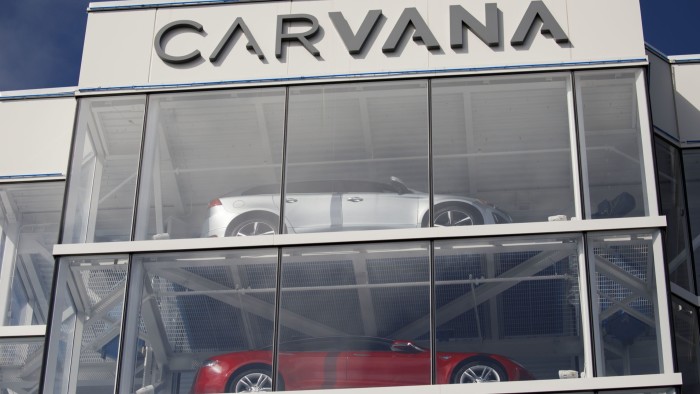Unlock the Editor’s Digest for free
Roula Khalaf, Editor of the FT, selects her favourite stories in this weekly newsletter.
Carvana knows a lot about dramatic changes of speed. The online car-reseller boomed during the pandemic, only to slump later. Now it is roaring ahead again. But chief executive Ernie Garcia insists, plausibly, that this 2025 model is nothing like its 2021 predecessor.
Carvana sold 46 per cent more vehicles in the first quarter than it did a year earlier, partly because nervous consumers are buying ahead of possible future price increases. Already, the cost of a used car has surged, thanks to White House tariffs that affect many new vehicles, helping to drive up Carvana’s share price by one-third this year.
Demand for used cars also ballooned in 2021 because Covid-19 had brought new vehicle production to a halt. Then, Carvana’s market capitalisation shot up from $4.5bn to almost $60bn, despite it being largely unprofitable. By 2022, Carvana was flirting with bankruptcy — and a market value below $1bn — amid a heavy debt load and customers who were struggling with soaring interest rates.
Garcia has since done much under-the-hood tinkering. Carvana has slashed its marketing costs and other overheads, focusing on profitability. Its ebitda margin is now at a record high, and the company’s market capitalisation by Thursday had hit $60bn. Encouragingly, Garcia pointed during Wednesday’s analyst call not to the current demand bump but to a goal of selling 3mn cars within 10 years, versus half a million at present.
To put that target into perspective, it is still a fraction of the 56mn in total annual new and used cars that turn over each year. And it suggests the shares could go higher. At a little more than $30,000 per car, Carvana would be making $100bn in revenue by, say, 2033. Assume it hits its 13.5 per cent ebitda margin target, put the resulting profit on a multiple of 15, and it suggests Carvana could be worth about $200bn by then.
There are some real-world hazards to navigate. Carvana is, after all, chasing growth in a low-margin, high-velocity business, having only recently emerged from a near-death experience. It only has the infrastructure to sell just over 1mn units a year.
There is financial risk too: Carvana makes loans to customers and then sells them off to financial investors, making it a kind of shadow bank. In good times, of course, that is a lucrative business.
One day, Carvana sees itself as the Amazon of used auto sales. To earn that title, it needs a cross-country logistics network and a brand to match. Better profitability is a good start. At the least, Carvana has managed to combine a gleaming exterior with a better-padded interior, too.
